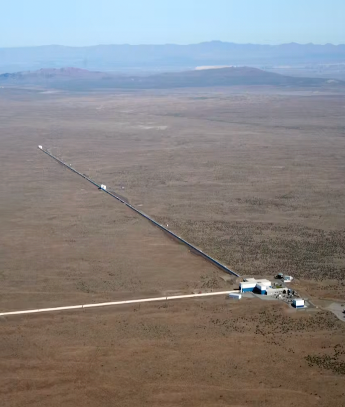The LIGO-Virgo-KAGRA network has now started the second half of its fourth observing run, called O4b. The first half of the fourth observing run, O4a, ran from May 2023 - January 2024 and already accumulated 81 new significant gravitational-wave candidates. One of these was a neutron star merging with a mass-gap object, which you can read more about here. Many more gravitational-wave events (and many more glitches) to come!
The LIGO-Virgo-KAGRA network has now started the second half of its fourth observing run, called O4b. The first half of the fourth observing run, O4a, ran from May 2023 - January 2024 and already accumulated 81 new significant gravitational-wave candidates. One of these was a neutron star merging with a mass-gap object, which you can read more about here. Many more gravitational-wave events (and many more glitches) to come!

Help LIGO scientists make gravitational-wave discoveries by identifying how to improve our detectors
Learn moreYou can do real research by clicking to get started here!
Zooniverse Talk
Chat with the research team and other volunteers!
Gravity Spy Statistics
View more statsKeep track of the progress you and your fellow volunteers have made on this project.
Every click counts! Join Gravity Spy's community to complete this project and help researchers produce important results. Click "View more stats" to see even more stats.
Percent completeBy the numbers
Message from the researcher
Connect with the research team on Talk to learn more about this project!
About Gravity Spy
In 2015 the Advanced LIGO detectors made the first observation of gravitational waves. Gravitational waves are produced by some of the most cataclysmic events in the Universe, such as the collisions of black holes. However, by the time they reach Earth, they are minuscule, and require extremely sensitive instruments, such as the Advanced LIGO detectors, to be measured. By studying gravitational waves we can learn more about how our Universe works, especially about the properties of black holes, which are hard to observe otherwise!
Gravitational-wave detectors are complicated machines. In addition to real signals, their data contains a variety of different sources of noise. Short bursts of noise are called glitches. Glitches greatly complicate the identification and analysis of gravitational-wave signals. They have a range of instrumental and environmental origins. The goal of this project is to try to hunt down the origins of different types of glitch, such that LIGO scientists can work to eliminate them. You are asked to find common patterns in gravitational-wave data and in other measurements from the LIGO site that record the state of the detector.
Understanding the variety of glitches in the data is the first step in being able to identify their causes. Our volunteers successfully identified multiple new types of glitch! We are now also asking volunteers to help narrow down the causes of glitches by looking at additional data collected by our detectors too.
Gravity Spy is funded by the National Science Foundation (NSF) grants INSPIRE 1547880 IIS-2107334. This project is based upon work supported by NSF’s LIGO Laboratory which is a major facility fully funded by the NSF.